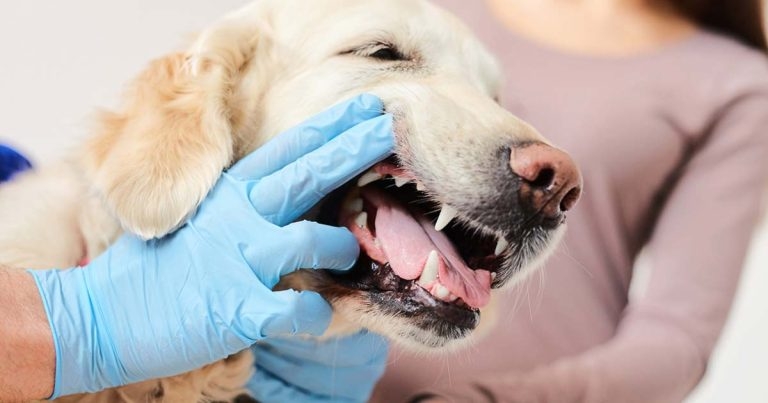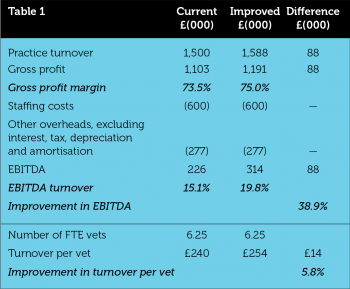12 May 2017
Alison Lambert and Mark Harwood take a look at how you can make the best practice financial theory work for you in the real world.

IMAGE: © YakobchukOlena/Fotolia.
As you are all too aware, practices are facing increased commercial, demographic and technological pressures, under which it can sometimes feel like you’re running to stand still.
Yet, from the outside looking in, we see a good number of practices are really thriving despite this. From a business perspective, what sets these thriving practices apart is actually quite clear, and perfectly translatable:
Analysed in more detail in part one (VBJ 168), the fee to drug ratio is much discussed in veterinary accounting circles, although all too often its importance is not fully appreciated by owners and practice managers. In particular, many large animal practices have been under pressure for some years now with squeezed drug margins.
With the drugs element of turnover typically being notably higher in such practices compared to those working with companion animals, it has been crucial for large animal practices to challenge their strategy on pricing and charging, and become more fee-focused.
Yet, monitoring your practice’s fee to drug ratio should always be undertaken in line with measurement of other key performance indicators (KPIs), in particular tracking the different sources of turnover, such as first consult, follow-up consult, vaccines, neutering, dentistry and so on. This analysis is invaluable in identifying where undercharging of fees is primarily occurring, therefore, allowing efforts to be prioritised in areas of maximum potential return.
Turnover by source should be measured both in terms of value (amount invoiced) and volume (number of fee transactions) to give a true picture of the financial health of your practice. Collecting this data allows an average fee per turnover type to be calculated. We might expect the average fee to be consistent when there is a fixed price on the practice management system, but, in reality, this is often rarely the case due, almost entirely, to undercharging of fees.
Measuring average fee per turnover type, both for each employee and for the practice as a whole, will clearly highlight any issues. Armed with this data, proactive steps can be taken to help reduce any persistent undercharging – discussing and addressing the reasons and equipping the team (and/or practice owners) with the appropriate tools and skills.

All too often, small corrections in fee charging are felt to return only minimal improvements on a practice’s finances and are, therefore, deemed not worth the effort by many practice managers. In fact, in most cases, this couldn’t be further from the truth.
Let’s take a practice with 6.25 full-time equivalent (FTE) vets with a current turnover of £1.5m (Table 1).
A focus on eradicating undercharging results in each vet billing out an extra £50 (excluding VAT) of fees per day. Often, much more is achievable. If we say this practice has 280 working days per annum, this results in an additional £87,500 (excluding VAT) of additional turnover. With a given level of staffing costs and other overheads, this improvement in turnover flows directly into gross profit – as it is all fees – and directly to earnings before interest, tax, depreciation and amortisation (EBITDA), a form of adjusted profit, and a further important KPI to monitor.
Our 6.25 FTE vet practice’s EBITDA jumps significantly from £226,000 to £314,000, almost a 40 per cent improvement and on a scale that can dramatically change a practice’s finances for the better. Yet, the turnover per vet improvement in this case is “just” £14,000 per annum – less than six per cent.
Think of the possibilities at your practice – £50 (excluding VAT) per vet, per day of extra fees may not even equate to two extra consults being properly charged, or an extra eight minutes of surgery time being billed correctly.
We must also consider, charging properly goes hand-in-hand with having prices set appropriately.
Let’s say our example practice has an injection fee of £4 (excluding VAT), when a benchmarking exercise suggests £6.50 is more appropriate. If each vet administers an average of 10 injections per day (6.25 FTE vets and 280 working days per year), repositioning the injection fee would yield an additional £43,750 of turnover every year – a massive 50 per cent of the increase in “improved turnover” shown in Table 1.
Of course, most of what we’ve talked about so far involves tightening up the details of your financial processes, when actually, perhaps the biggest impact on practice finances comes from the most obvious source – client footfall.
Plenty might have happened by the time the owner has actually got to the point of standing in front of you:
All this means at least two or three days have passed since the owner first identified a problem. If he or she is seeing you, it’s because he or she has made the conscious decision to pay for your expert opinion – so the very least you can do is give it.
Onswitch undertakes ongoing research with pet and horse owners and a consistent theme is the frustration felt when vets don’t make clear recommendations. Owners want you to tell them what’s wrong with their animal and take decisive action to fix things – that’s what they’re paying for – your considered opinion, and a tailored diagnosis they can’t get online.
The process is simple:
Offer every owner an appointment when they first contact the practice – don’t tell them to “wait and see”, send them to a pet store or show so little interest in their animal they put the telephone down feeling your practice does not want their business. It sounds obvious, but it’s still happening.
Forty per cent of calls to your practice should be converted into paid-for visits and consultations, and 25 per cent of these consults should result in further tests or procedures. The key is not to recommend investigations or intervention without the owner understanding the reasons why and being fully involved in the decision, and this is where a seven-step process can help ensure good medicine is delivered in the context of an effective and engaging consultation:
You might think you’re doing this already, but you might also be surprised to see how your consult skills measure up when they are filmed and scored objectively against these seven key steps, using Onswitch’s ConsultTrack tool. Get the process right and everybody benefits:
As we said at the start, times certainly are challenging for veterinary practices, but with the right approach and the right tools you can regain control over your practice finances and ensure your hard work no longer goes unrewarded.